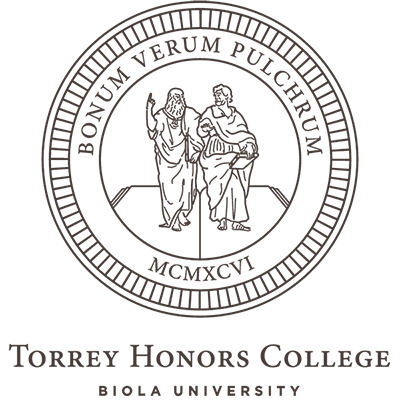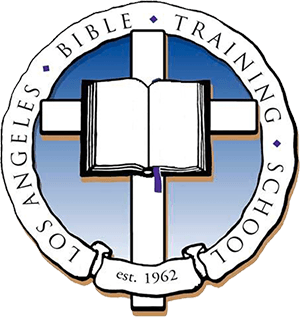A scene from The Canterbury Psalter (12th century)
Blog
Double Consubstantiality

The Son of God is homoousios, consubstantial, with the Father. This consubstantiality means that there is one divine nature, and that Father and Son are persons who both have that numerically same nature.
When the Son takes human nature into personal union with himself, he assumes another nature while of course retaining his divine nature. So the two natures are united in him, that is, in his person (hypostasis). We can say that in the incarnation he is consubstantial with humanity. In fact, we did say this, in the early centuries during which the councils were expounding Christian doctrine. Christ is consubstantial with his Father divinely, and consubstantial with his mother humanly.
The result has been called double consubstantiality, and while it’s a lot of syllables, it is a beautiful doctrine, well suited for teaching memorably. It enables us to speak of the two natures of the incarnate Son in a way that stays in contact with the trinitarian background of the language of nature. When we say that the double consubstantiality shows the two natures of incarnational teaching, we can go on to say that these two natures are joined in the hypostatic union, that is, in the person (hypostasis) of the Son.

One pedagogical advantage of teaching double consubstantiality is the way it joins up the language we use in the Trinity with the language we use in Christology. Think about persons and natures: There are three persons in the Trinity, and one of them them became incarnate. So that one incarnate person (the one Christology is about) has two natures. The terms person and nature are analogically capable of picking out what there’s one of in God and one of in humanity (a nature), and what there’s three of in the Trinity but only one of in the incarnation (person). Here’s a diagram that maps that out, though you should be alert to a couple of problems with the diagram: first, the box representing human nature should be smaller than the box representing divine nature: divine nature is infinite, after all. So the lower box, representing human nature, would be impossibly small if drawn to scale. Instead of drawing it to scale, I drew it big enough to write a word in. The second problem with the diagram is the dotted line sectioning off each person from the nature. Again, that’s just there to hold the word in; it doesn’t correspond to any kind of partitioning or sequestering of the divine nature.
Of course the person in the incarnation is not a duplicated person (as if there were two Sons), but the very same person. The second person of the Trinity is the incarnate person of Christology.

We could even use the diagram to outline the incarnation. The result is even less pretty, but I’ve shaded in the zones containing the notions included in the the doctrine of the incarnate Son. The point is to indicate that the person of the Son has the entire divine nature, but that the Father and the Spirit are not incarnate; they are not the hypostases of the hypostatic union. If you focus on just the shaded part of the diagram, you are looking at what is involved in the incarnation. It’s a strange shape. John of Damascus called the incarnate Christ a composite person, not in the sense that his personhood is synthesized out of parts, but in the sense that, having taken human nature to himself, he must now be considered as one person two natures. You haven’t considered the person of the incarnate one unless you have considered him compositely, in both natures.
If you back off and abstract the person of the Son from its union with the human nature, of course, you wouldn’t call him composite. He is God. But concretely as the incarnate one, he is also human.
Even more strangely and abstractly, if you back off and consider the human nature in the incarnation all by itself, you would have to say that it is not personal. But that’s because you just mentally subtracted from it the only person it is or has. If you mentally reintegrate it into its hypostatic union with the Son, it is extremely personal: personalized by the eternal second person.
What’s great about double consubstantiality is the way it draws the vocabularies of Trinity and Christology together. But that drawing together is also what raises a few conceptual and terminological issues that you don’t have to be a philosopher to notice. Here’s one of the more famous issues: The Son can’t be homousious with the Father in the same way he is homousios with us. Remember that his consubtantiality with the Father means he has the entire divine nature, the entirety of the numerically same nature the Father and Spirit have. But his consubstantiality with us doesn’t mean that: the incarnate Christ and I do not have the numerically same nature; I’ve got mine and he’s got his. You notice that we’re using the word nature differently in the two cases. This is surprising when you’re just thinking of two-natures Christology: these two natures ought to be parallel! But they’re not, and the reason is more apparent when you realize that the double homoousios straddles the creator-creature distinction. It makes use of the same word, nature, to speak of something God has and also something we have. But it’s no surprise that nature-having works differently for God and for us. That is, there must be enough of a basis of similarity that we can speak analogically; but there must be a wide enough difference that we can’t speak univocally. God has a nature and we have a nature, but nature doesn’t mean exactly the same thing on both sides of the line. The double homoousios means that the line between two senses of nature runs right through the incarnation.
About This Blog

Fred Sanders is a theologian who tried to specialize in the doctrine of the Trinity, but found that everything in Christian life and thought is connected to the triune God.


